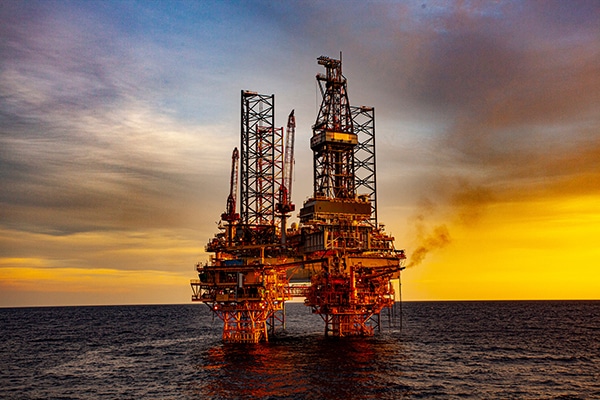Dust Collection in the Oil and Gas Industry
The oil and gas industry relies heavily on specialized equipment throughout its exploration, extraction, refining, storage, and distribution stages. This encompasses a wide range of products, including the following:
- Infrastructure components for oil and gas transmission pipelines, drilling rigs, and offshore platforms
- Distribution pipelines
- Storage tanks and pressure vessels
- Tankers and barges
- Infrastructure and equipment for refining facilities
- Specialized tanker trucks and railcars
- Drilling equipment designed for high-temperature and high-pressure environments
Navigating the Challenges: Dust and Fume Collection

Moreover, cutting and grinding heavy steel in the oil and gas industry produces significant amounts of dust. This dust irritates the lungs, poses toxicity risks when inhaled or ingested, and can potentially damage other equipment and processes. Containing and controlling this heavy dust can be a challenge.
Corrosion resistance is also crucial for equipment used in the oil and gas industry due to highly corrosive environments and prolonged exposure. However, the materials and coatings used to enhance corrosion resistance often contain highly toxic elements like cadmium, further increasing the danger associated with working with dust or fumes.
Controlling Dust in Oil and Gas Drilling: Ensuring Safety and Sustainability
Furthermore, it is worth mentioning the importance of controlling the dust generated during drilling for oil and gas, particularly in the context of fracking. Fracking involves the use of sand as an abrasive for the drill bit. Sand plants that provide the fracking sand to the oil and gas industry play a significant role in managing the dust generated during this process. Both wet scrubbers and dry dust collectors are utilized, depending on the application and the plant’s capacity to handle the waste from wet scrubbers.
By addressing these challenges and implementing appropriate dust collection measures, the oil and gas industry can ensure the safety and well-being of its workers while minimizing environmental impacts.
Solutions for Dust and Fumes in the Oil and Gas Manufacturing Industry
At Sly, we specialize in managing fumes and dust for oil and gas manufacturers. Whether it’s pipeline production, fracking, or drilling equipment manufacturing, we provide thorough process analysis, identify challenges, and deliver customized air quality solutions tailored to your requirements. For industry-standard guidance and advice, please feel free to contact our team.

